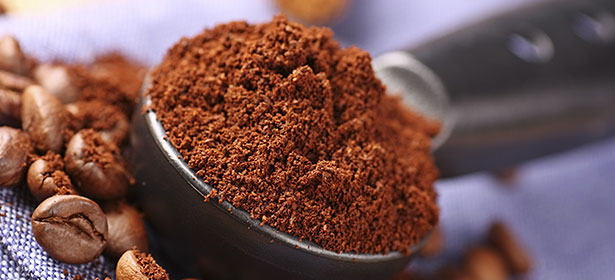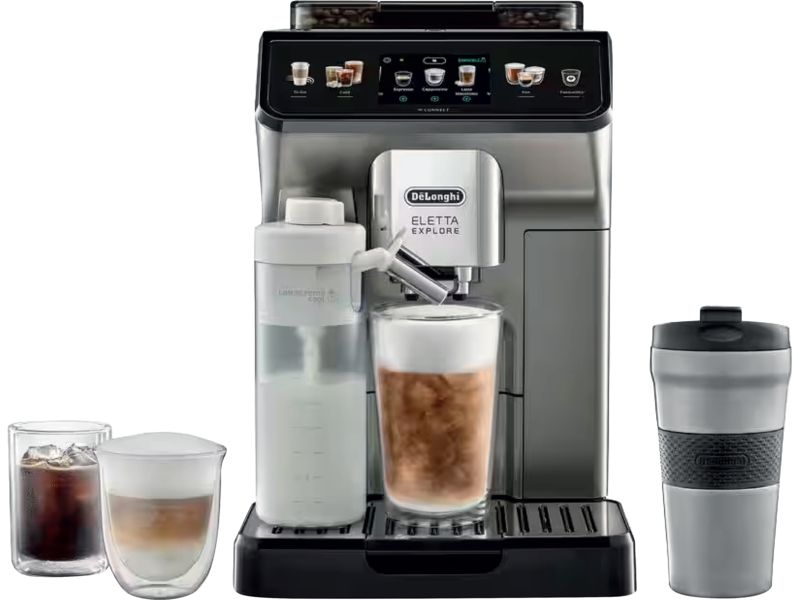How to make perfect espresso and cappuccino

Making espresso and cappuccino is an art that can take practice.
Use our guide to get to grips with the key steps you need to take to brew a perfect coffee, and watch our coffee tasting expert Giles Hilton show you how it's done.
Not sure which coffee machine is right for you? Our guide to the Best coffee machines for 2024 will help you weigh up the pros and cons of the different types.
Video: How to make espresso and cappuccino coffees
Our years of testing coffee machines have taught us that, however good your coffee-making techniques are, if you have a shoddy coffee machine you'll end up with a disappointing espresso. So make sure you have a coffee machine you can trust.
The machine you choose depends on how much input you want into the coffee-making process. Here's a quick summary of the different types available:
- Best pod coffee machines - ideal if you want a quick brew with minimal effort, as they automate the coffee-making process.
- Best bean-to-cup coffee machines - handy if you like a freshly-ground bean but still want a machine that does all the work.
- Best espresso machines - good if you want to get more hands-on and prepare the coffee yourself.
This guide explains how to make coffees with your espresso machine, but there are also useful tips for getting the most out of other types of machine. If your bean-to-cup or capsule machine has manual milk frothing (eg a steam pipe), we explain how to use it to froth milk successfully for cappuccino.
Video: What makes a good espresso?
Five steps to make the perfect espresso
Follow these tips to achieve coffee perfection. Want to jump straight to the video of our coffee expert Giles Hilton explaining what he looks for when tasting an espresso or cappuccino?
1. Prime your coffee machine
Don't skip this crucial first step, no matter what kind of machine you have.
- Fill the tank with clean, cold water.
- Place an empty cup on the drip tray under the spout.
- Switch on the coffee machine and press the start button as if making a single espresso.
Water will be pumped through the coffee machine and through the spout. This flushes out any leftover grains from the last coffee. It also heats water ready for your real espresso. If the water isn't clear, repeat the process until it runs clear.
2. Pick the right coffee
With coffee, you get out what you put in. You'll need to use the right type of coffee for the best results; if the grind is too fine or too coarse, your espresso won't extract properly and you'll end up with an underwhelming brew.
Espresso (traditional) coffee machine
To make a great espresso, you'll want a strong, high-roast coffee that's finely ground, so that the water can be pushed through it at the right rate to get the best flavour. Look out for ground coffee labelled 'espresso' or specifically designed for use in coffee machines - or buy whole beans and grind at home.
Bean-to-cup coffee machine
You should be able to adjust the grind level on your machine, depending on how finely you want your coffee to be ground - check your machine's instructions for more detail. Be aware that too fine a grind can clog the machine, and you should make adjustments to the level during grinding to avoid damaging the mechanism. Some models also warn against oilier dark-roasted beans, which may clog the machine.
Capsule or pod coffee machine
Pre-measured coffee pods take all the guesswork on grind size out of the equation. All you need to do is buy a capsule that offers the intensity of roast you are after, and that is compatible with your machine. See our Best pod coffee machines for 2024 guide for more advice.

3. Measure out the coffee
If you have an espresso coffee machine, it should come with a measuring spoon, so it’s easy to know how much coffee to use. This will usually be around 7g of ground coffee for a single espresso, or 14g for a large espresso or two single espressos. For a double-shot, you use the larger metal filter basket (if supplied). This fits into the portafilter that you attach to the machine.
Preparing your coffee:
- Check that the filter basket is clean.
- Put the basket in the portafilter.
- Spoon in your coffee.
- Pat down the coffee using the tamper (this is usually supplied on the machine, or is the other end of the measuring spoon).
- It is important that the coffee is evenly pressed into the basket, so that it is relatively compact and has a level top. This allows water to spread evenly through the grounds. Don't overdo it, though, as if it's too firmly compacted this will prevent proper extraction.
- Fit the portafilter into your machine.
If you have a bean-to-cup coffee machine, your machine will do all the work for you. All you need to do is tip your coffee beans into the machine and it will grind and tamp the correct amount for you.
If you have a pod coffee machine, all you need to do is pick your desired pod and pop it in the machine.
4. Warm your cup
It’s worth using the built-in cup warmer on your machine if it has one, or filling your cup with hot water to warm it before you use it. This helps your espresso to keep its temperature instead of being cooled down by a cool cup.
Espresso coffee is cooler than other types, such as filter or instant coffee, so it can take some getting used to if you are accustomed to a hotter brew. Pre-heating the cup will help.
5. Make the espresso
You're now ready to make your espresso. This is usually just a case of pressing the relevant button on your machine.
The time it takes to make your espresso is variable, as each coffee machine works differently, and the flow rate will also depend on how the coffee beans are ground and how firmly you’ve tamped the coffee. Usually, it should take about 17-24 seconds.
We've found, over many years of testing coffee machines, that some models can drip for longer than they should, weakening your drink. If your machine drips, remove the coffee as soon as you see clear water.
The perfect espresso should have a golden creamy-looking top, known as a crema.
Video: What makes a good cappuccino?
Three steps to make the perfect cappuccino
To turn your espresso into a tasty cappuccino, you’ll need to use your machine’s steam pipe to froth some milk and transform your coffee’s texture from flat and smooth to light, bubbly and airy. Here are the steps you need to take:
1. Get the coffee machine ready
- Switch your coffee machine to its cappuccino setting, which increases the water temperature and creates steam.
- Expel any water from the steam spout into an empty cup, by briefly turning on the steam pipe control valve.
2. Froth the milk
To make a nice textured milk foam for your cappuccino, it's best to use a metal jug, as they heat up more quickly than ceramic ones.
- Fill the jug to around an inch with semi-skimmed milk.
- Turn on the steam pipe and hold the jug underneath, allowing steam to blow into the milk.
- Move the jug gently up and down to fold air into the milk. You’ll see the milk start to expand in size, with bubbles appearing.
- Listen out as well. You should hear a high-pitched whining noise as the process continues. If you hear a growling noise, stop immediately. This signals that the milk is nearing boiling point and will soon go flat.
Don’t be disheartened if you don’t get a good result straight away. It can take practice.
If you have a pod coffee machine, most models can be bought with an automatic milk frothing accessory that will do this step for you at the touch of a button, although some do have traditional steam pipes for manual frothing. Some capsule brands, such as Dolce Gusto and Tassimo, use pre-prepared milk capsules instead.
If you have a bean-to-cup coffee machine, you'll either have a steam pipe and need to follow the steps above, or you might have a model that automatically froths the milk and prepares your cappuccino, in which case you'll just need to add milk to the frothing unit.
If you're looking to buy a new machine, use our coffee machine reviews to narrow down results by automatic or manual milk frothing, depending on which you prefer.
3. Combine the frothed milk and espresso
The final stage of creating your cappuccino is to add the lovely frothed milk to the espresso you made earlier.
- Start by pouring in the thickened, heated milk.
- Then use a spoon to transfer the frothiest bits on top.
Ideally, your cappuccino should have equal proportions of coffee, milk and foam.


